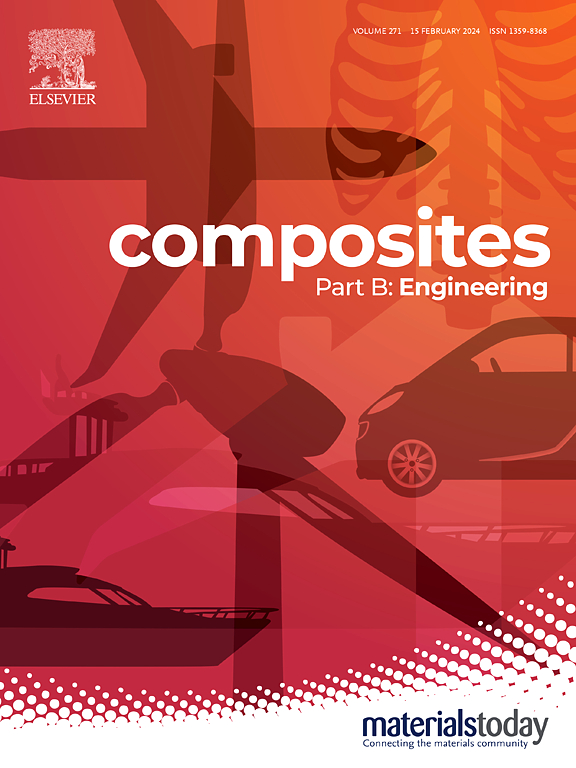Thermomechanical fatigue life assessment of polymer-matrix composites via entropy-based damage evolution and stiffness degradation under different frequencies
IF 12.7
1区 材料科学
Q1 ENGINEERING, MULTIDISCIPLINARY
引用次数: 0
Abstract
This study assessed the fatigue performance of glass/epoxy composite by exploring the role of loading frequency (20–50 Hz) on fatigue strength, lifespan, and damage evolution. Implementing bilinear thermographic approaches ( and ) highlighted a remarkable fatigue strength reduction as frequency increased. At higher frequencies (40 Hz and 50 Hz), the discrepancies in fatigue strength values resulting from thermographic methods were more pronounced than at lower frequencies. The determined fatigue strengths at higher frequencies were then compared to those obtained from the standard curves as a reference. The analysis demonstrated the closer alignment of results with the reference curves. The unfeasibility of bilinear models at higher frequency under high-stress levels necessitated establishing a new trilinear model. The developed model aimed to assess the fracture fatigue entropy (FFE), alongside the entropy-based damage index (EDI) as a normalized indicator for damage evolution across low-, intermediate-, and high-cycle-fatigue regimes, facilitating the FFE-based curves validated with the experimental data. The new EDI-based curves were then established at different levels of damage accumulation. Damage evolution was captured via real-time acoustic emission (AE) monitoring synchronized with the registered thermal responses, enabling the identification of critical fatigue cycles, where rapid damage accumulation begins, alongside determining the boundaries that indicate abrupt failure. Correlating the AE-identified critical boundaries with the stiffness reduction enabled the establishment of curves based on various controlled degradation levels, bridging the knowledge gap and establishing a refined methodology for thermomechanical fatigue analysis of polymer-matrix composites (PMCs).
求助全文
约1分钟内获得全文
求助全文
来源期刊

Composites Part B: Engineering
工程技术-材料科学:复合
CiteScore
24.40
自引率
11.50%
发文量
784
审稿时长
21 days
期刊介绍:
Composites Part B: Engineering is a journal that publishes impactful research of high quality on composite materials. This research is supported by fundamental mechanics and materials science and engineering approaches. The targeted research can cover a wide range of length scales, ranging from nano to micro and meso, and even to the full product and structure level. The journal specifically focuses on engineering applications that involve high performance composites. These applications can range from low volume and high cost to high volume and low cost composite development.
The main goal of the journal is to provide a platform for the prompt publication of original and high quality research. The emphasis is on design, development, modeling, validation, and manufacturing of engineering details and concepts. The journal welcomes both basic research papers and proposals for review articles. Authors are encouraged to address challenges across various application areas. These areas include, but are not limited to, aerospace, automotive, and other surface transportation. The journal also covers energy-related applications, with a focus on renewable energy. Other application areas include infrastructure, off-shore and maritime projects, health care technology, and recreational products.
 求助内容:
求助内容: 应助结果提醒方式:
应助结果提醒方式:


